And it was so that in the process of exchanging views on the materials published in the HE, it turned out that quite a significant part of the users of this site were interested in arms Bronze Age and, in particular, weapons and armor of the legendary trojan War. Well – the topic is really very interesting. In addition, almost all familiar, even at the level of the school textbook stories for the fifth grade. “Copper spears,” “Helm-helm Hector,” “the famous shield of Achilles,” are all from there. And besides, this historical event itself is unique. After all, people learned about it from a poem, a work of art. But it turned out that, having learned about him, and having shown a corresponding interest, they gained knowledge about a culture unknown to them earlier.
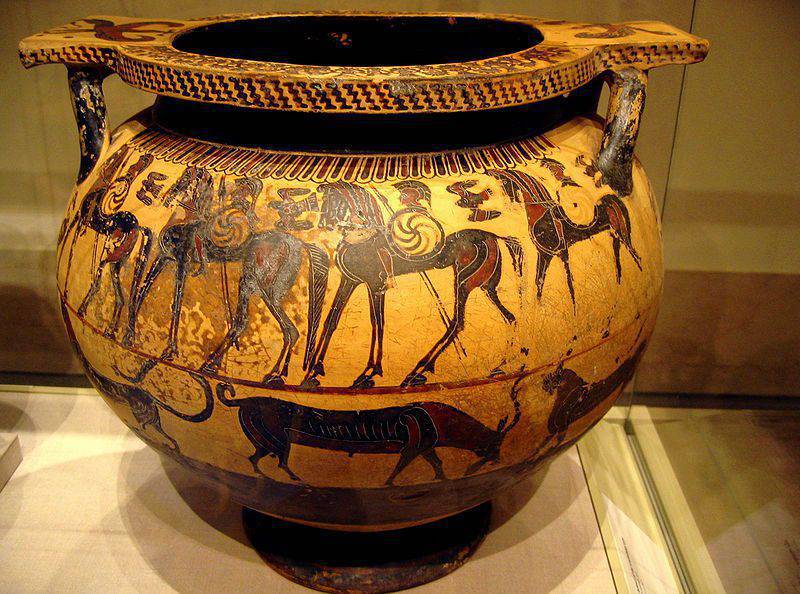
Black-figured ceramic vessel from Corinth depicting the characters of the trojan War. (Around 590 – 570 years BC. E.). (Metropolitan Museum, New York)
Well, you need to start from the beginning. Namely, that the myth of troy, besieged by the Greeks, was not confirmed by convincing facts until the end of the nineteenth century. But then, for the happiness of all mankind, the romantic childhood dream of Heinrich Schliemann received powerful financial support (Schliemann became rich!) And he immediately went to Asia Minor in search of the legendary troy. After 355 AD this name was not mentioned anywhere, then Schliemann decided that the one-on-one description of Herodotus fit the Ghisarlyk hill and began to dig there. And he dug there from 1871 for over 20 years, until his death. In this case, the archaeologist, he was no! He removed finds from the excavation site, without describing them, threw away everything that did not seem valuable to him and dug, dug, dug … Until I found “my” troy!
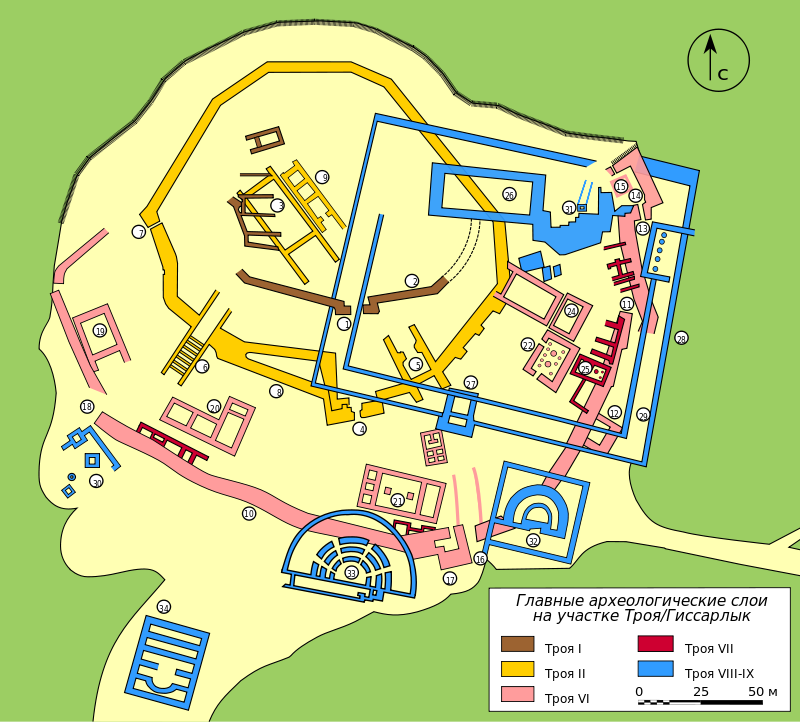
Many scientists of that time doubted that this was really troy, but he was patronized by the British Prime Minister William Gladstone, he got a professional archaeologist Wilhelm Dornfeld in his team and gradually the secret of the ancient city began to open! the most surprising discovery of them was that they found as many as nine cultural layers, that is, each time a new troy was built on the fragments of the previous one. the oldest, of course, was troy I, and the “youngest” troy IX of the Roman time. today, there are even more such layers (and sublayers) – 46, so it was not easy to study exactly troy!
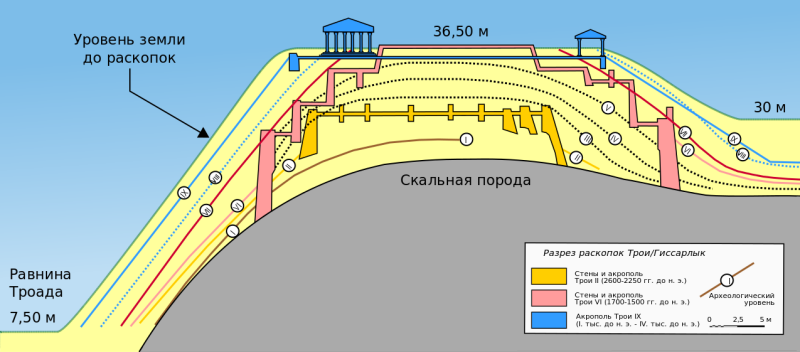
Schliemann believed that troy he needed was troy II, but in fact the real troy is number VII. It is proved that the city died in the flames of a fire, and the remains of people found in this layer, eloquently say that they died a violent death. the year when it happened is considered to be 1250 BC.
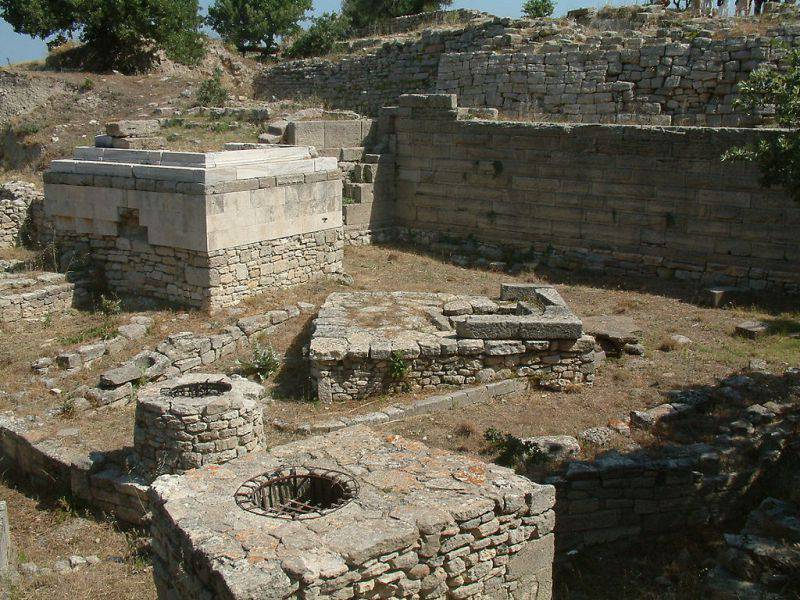
the ruins of ancient troy.
Interestingly, during the excavation of troy, Heinrich Schliemann discovered a treasure of gold jewelry, silver goblets, and bronze weapons, and he took all of this as the “treasure of King Priam.” Later it turned out that the “treasure of Priam” refers to an earlier era, but that is not the point, but that Schliemann simply appropriated it. His wife Sophia, a like-minded person and an assistant who secretly endured all these things from the excavations, helped him to make it unnoticed. But officially, this treasure was supposed to belong to turkey, but she did not get it except for a few small things. He was placed in the Berlin Museum, and during the Second World War, he disappeared, and until 1991, where he was and no one knew him. But in the year 1991 it became known that since 1945, the treasure taken as a trophy is located in Moscow in the Pushkin Museum of Fine Arts. A.S. Pushkin and today it can be seen in the hall number XXUMX.
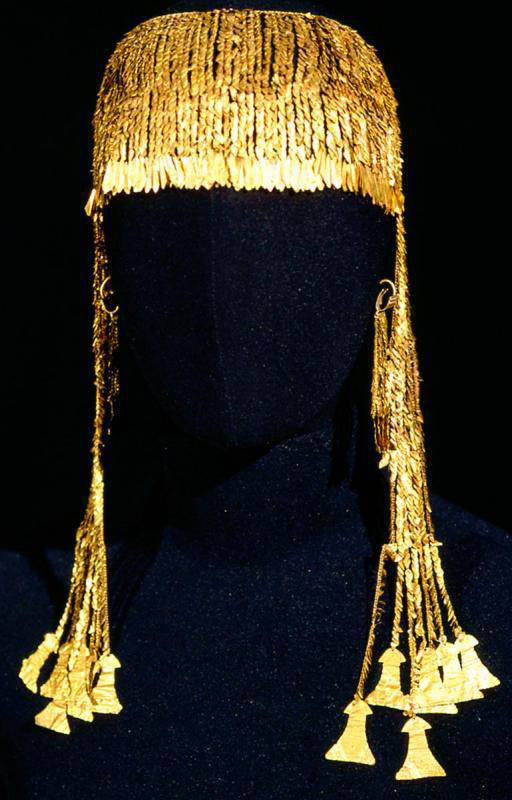
A large diadem from Clade A 2400 – 2200 BC. (the Pushkin Museum of Fine Arts)
However, without any finds from this treasure we know a great deal about that time today. the fact is that professional archaeologists perceived the discovery of Schliemann as a challenge, but took into account his experience and began to dig in all the places mentioned in Homer’s Iliad – in Mycenae, Pylos, in Crete. We found the “golden mask of Agamemnon”, a lot of other items of that era, and there are simply a very large number of swords and daggers.
And the good thing is that they were bronze, not iron, and therefore well preserved! So, this is what scientists, historians of various countries of the world, including the “master of swords” Ewart Okshott, think of swords and daggers of the epoch of the trojan war, in a so-called concentrated form …
In their opinion, the early swords of the Aegean Bronze Age are among the most striking artifacts of that era in terms of craftsmanship and luxury. Moreover, it could be ritual products, and actual weapons used in the war. Early swords evolved from daggers. Form – derived from stone daggers. the stone, however, is very fragile, and therefore a long sword cannot be made from it. With the introduction of copper and bronze, the daggers eventually turned into swords.

Sword rapier type CI. Kudonia, Crete. Length xnumx see
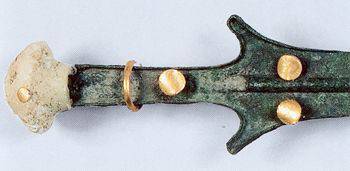
the handle to this sword.
the earliest swords of the Aegean period were found in Anatolia, in turkey, and date back to about 3300 BC. er the evolution of bronze weapons is as follows: from a dagger or knife in the early bronze era, to swords (“rapiers”), optimized for a stabbing blow (middle bronze era), and then to typical swords with blades in the shape of a sheet from the late bronze age.
One of the earliest swords of the Aegean world is the sword of Naxos (around 2800-2300 BC). the length of this sword is 35,6 cm, that is, it looks more like a dagger. A copper sword was discovered on the Cyclades in Amorgos. the length of this sword is already 59. Several Minoan bronze short swords found in Heraklion and Siva. their overall design clearly shows that they also originate from early leaf-like daggers.
But one of the most interesting inventions of the Aegean Bronze Age was the great sword. these weapons, which appeared by the middle of the second millennium BC on the island of Crete and on the territory of mainland Greece, are different from all the early models.
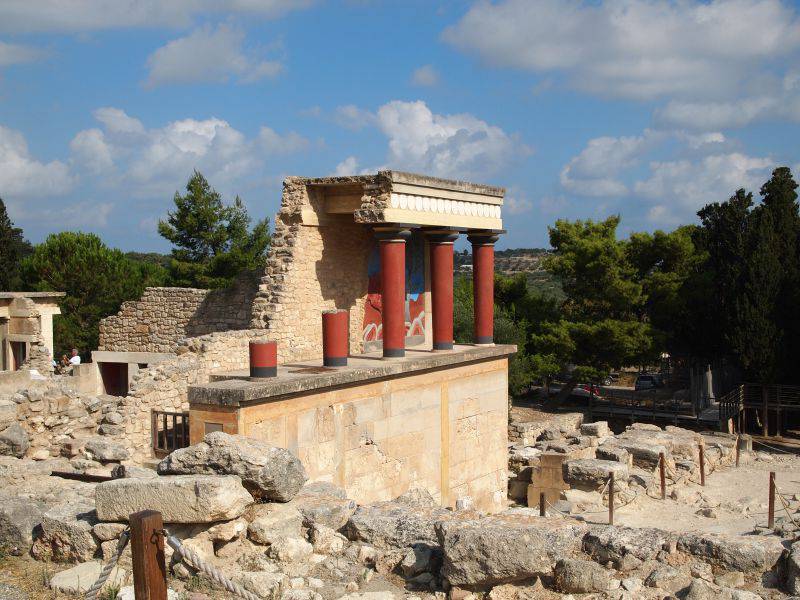
the famous palace at Knossos. Modern look. Photo by A. Ponomarev.
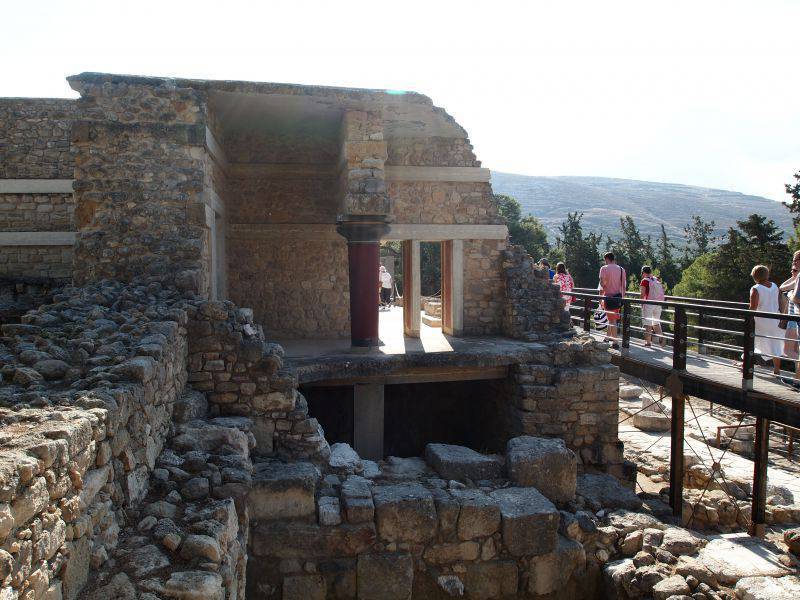
the territory occupied by the palace was huge and what they just did not dig. Photo by A. Ponomarev.
Analysis of some specimens shows that the material is an alloy of copper and tin, or arsenic. When the percentage of copper or tin is high, the blades can be distinguished even by their appearance, since they have a reddish or silver color, respectively. Whether this was done intentionally to imitate expensive metal products, such as gold and silver, so that these swords or daggers have a beautiful appearance, or is it simply the result of incorrectly calculating the right amount of alloying additives, is unknown. For the typology of bronze swords found in Greece, Sandars classification is used, according to which swords are located in eight main groups, under the letters from A to H, plus numerous subtypes, which in this case are not given due to their abundance.
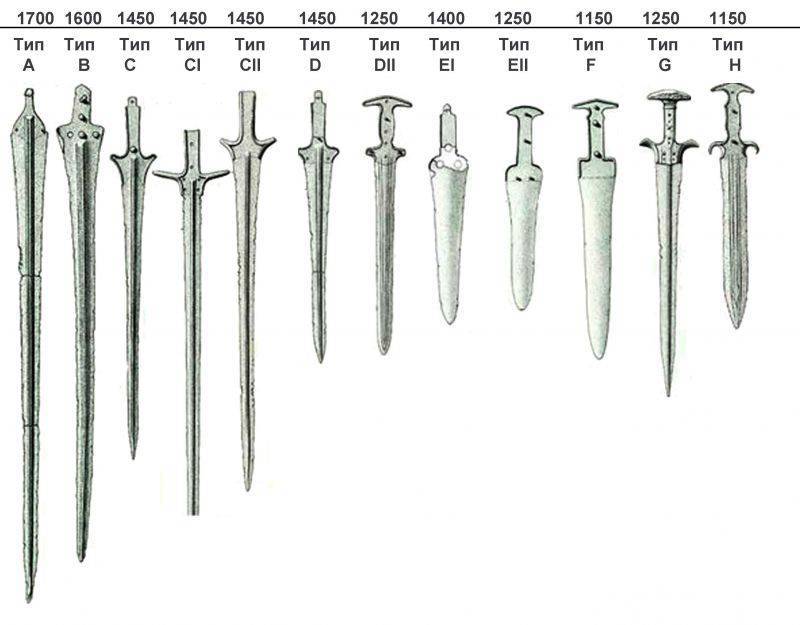
Sandars classification. It clearly shows that the most ancient swords for 500 years before the fall of troy (and it is believed to have taken place in 1250 BC) were extremely sharp! two hundred years before it came swords with V-shaped crosshairs and a high edge on the blade. the handle is now also cast together with the blade. For 1250, swords with an H-shaped handle, which in principle can be chopped and stabbed, are characteristic. Its base was molded together with the blade, after which wooden or bone “cheeks” were attached to it on rivets.
the connection between Minoan triangular small swords or daggers and long swords can be traced, for example, on a specimen found in Malia, Crete (around 1700 BC). It has characteristic holes for rivets on the blade in the tail section and a clearly defined edge. that is, this sword, like the early daggers, did not have a handle. the handle was wooden and fastened on rivets with massive hats. It is clear that it was impossible to chop with such a sword, but stabbing – as many as you like! the decoration of its handle, which was covered with a gold engraved sheet, was amazingly luxurious, and a wonderful piece of rock crystal was used as a top piece.

Dagger about xnumx g. BC. Length 1500 cm. Decorated with a notch with gold wire.
Long rapier swords were found in the palace on Crete in Mallia, in Mycenaean tombs, on the Cyclades, on the Ionian Islands and in Central Europe. Moreover, both in Bulgaria and in Denmark, in Sweden and in England. these swords sometimes reach a meter length. All have a rivet handle, a high diamond-shaped rib, except when it has a complex decor.
the hilt of these swords was made of wood or ivory and sometimes decorated with gold overlays. Swords are dated 1600 – 1500’s. BC, and the most recent samples to the period around 1400 BC. the length ranges from 74 to 111 cm. they find the sheath, or rather their remains. Based on these findings, it can be concluded that they were made of wood and often carried gold jewelry. Moreover, the preservation of metal and even wooden (!) Parts, which allowed the radiocarbon analysis of these products, makes it possible to completely reconstruct swords and daggers of this period, which was done, in particular, on the instructions of the archaeological museum in Mycenae.
Swords were worn on richly decorated lintels, the decor of which also reached our time. Well, a confirmation that such swords were stabbed are images of warriors who fight on rings and seals. At the same time, modern dating shows that a number of such swords were made in 200 years of the Homeric trojan War!

F2c sword reconstruction by Peter Connolly.
In this regard, many historians point out that such long piercing swords were in service with the “peoples of the sea” and, in particular, the famous shardan, known in Egypt for the images on the walls of the temple in Medinet-Abu 1180 BC.
It is worth paying attention once again to the fact that the existing opinion that these swords are suitable for anything but their immediate purpose is incorrect. the replicas of these swords were tested, and they demonstrated their high efficiency precisely as piercing weapons, intended to make deadly attacks in the fight of the most genuine swordsmen!
that is, today the finds of bronze swords and daggers in the Aegean Sea region are so voluminous that they made it possible to work out their typology and draw a number of interesting conclusions. It is clear that all of them simply can not be attributed directly to the trojan War. this is nonsense! But we can talk about the “Homeric time”, the Cretan-Mycenaean civilization, the “Aegean region”, etc.

Reconstruction of two swords Naue II with wooden handles on the rivets. this type of sword was characteristic of Central and Northern Europe around 1000 BC.
Moreover, the proliferation of such weapons in European countries tells us that perhaps trade relations at that time were significantly more developed than is commonly believed, so it is quite possible to say “European internationalization” and “integration” during the Bronze Age. Specifically, this can be expressed in the fact that there existed a certain seafarers people – the same “sea peoples”, who sailed around the whole of Europe and distributed Mycenaean and Cretan types of weapons, and, in particular, swords throughout the whole of Europe.
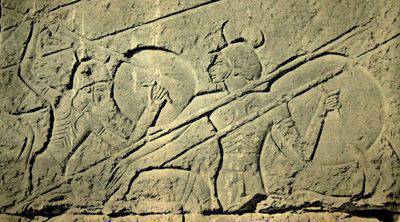
the image of the warriors of the “peoples of the sea” (Shardan) on the relief of Medinet-Abu.
Somewhere they found use, and where the war was different, these weapons were acquired as “overseas wonders” and sacrificed to the gods. In addition, we can conclude about tactics: there was a people whose soldiers were a caste, and quite closed. the warriors of this people learned to use their long piercing swords from childhood. And just to take this sword in hand, and it was impossible to cut them off from the shoulder. But then this caste died out.
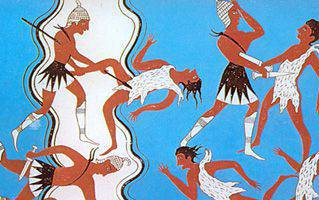
F type swords depicted on the fresco from Pylos (around 1300 BC)
It took the “soldiers” for the “mass army”, to teach which there was neither time nor strength, and the piercing swords very quickly changed the cutting ones. After all, the chop is intuitive in nature and much easier to master than an injection. Especially the sword of such a complex structure.
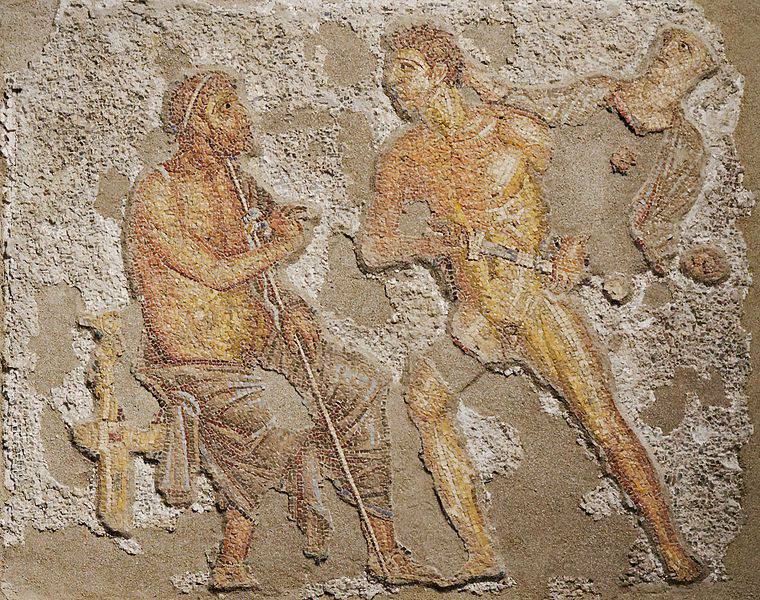
Achilles and Agamemnon: a Roman mosaic from Naples and … a roman sword on the thigh of Achilles!
Schemes A. Shepsa





